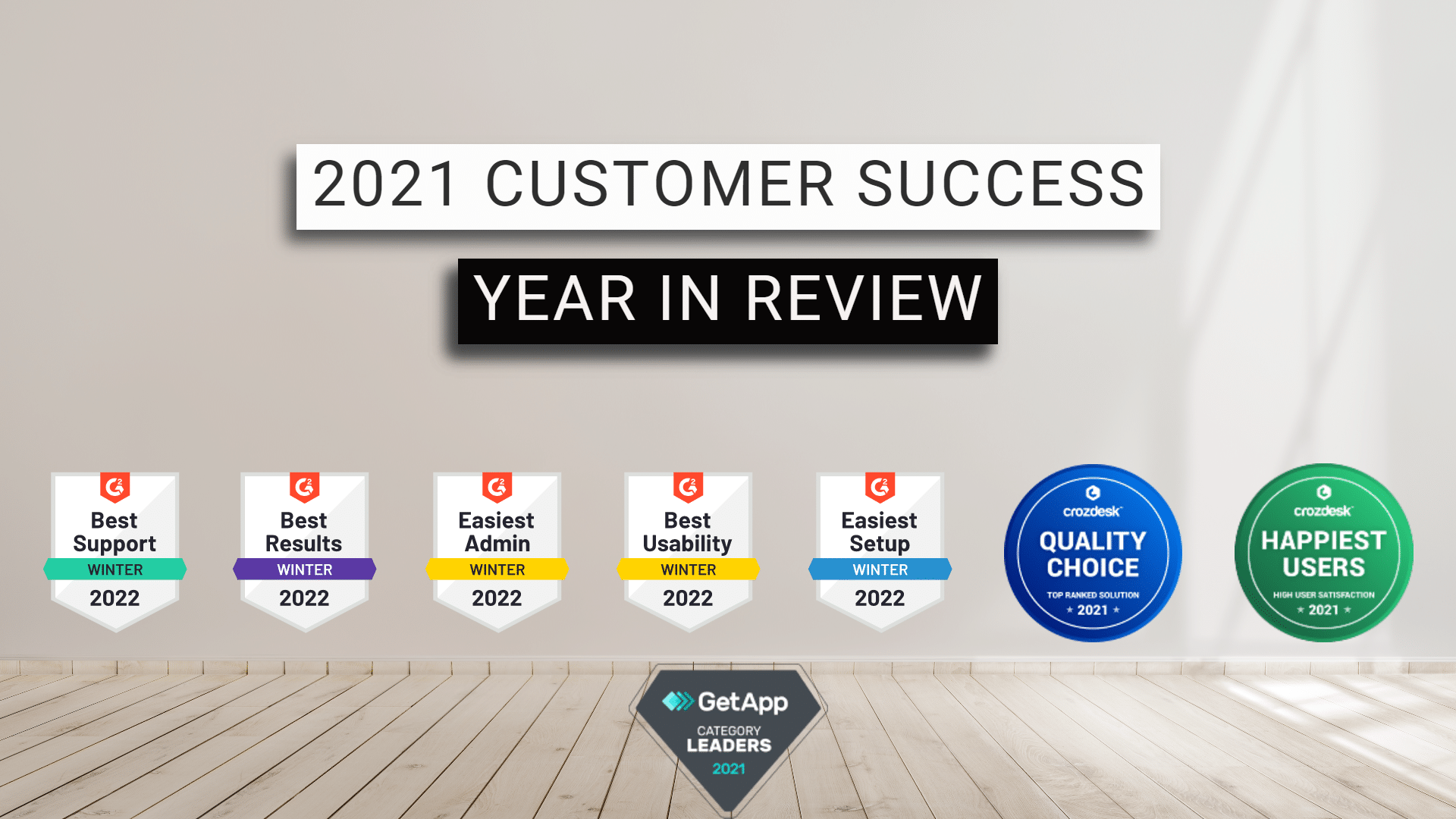Customer success managers and account managers are not the same job, nor are they two sides of the same coin. And if you want to run an efficient customer success team/program, you need to understand where the differences are.
To start, it’s not enough to rename your account management department into a customer success one – that’s not going to accomplish anything. In fact, in recent years, both professions have diverged even further into distinct roles with established sets of responsibilities for each.
To understand the key differences between the two customer-facing roles, we’ll go over a few core areas where customer success management and account management differ.
1. Different Backgrounds
Account management has been around for a long time—companies long ago realized the importance of having a group outside the sales team that focuses on business relationship management and growth. Beyond that, account people facilitate efficient communication between a company and its clients and have evolved to collaborate with customer success to drive renewals, upsells, and cross-sells.
Account managers are present in many diverse types of businesses, from traditional manufacturing to the most cutting-edge tech companies. The only requirement is that the company actually has accounts, i.e. customers, to manage.
Customer success, however, represents a more novel approach to business, both as a department and as a philosophy. Its recent popularity has been driven largely by the SaaS space. While every business can benefit from customer success strategies, the responsibilities of a customer success manager (CSM) have largely been shaped by the SaaS customer lifecycle.
How companies interact with customers has changed a great deal as the business sector evolved with the addition of customer success. There have been significant changes to:
- The perception of customer experience and its importance
- How businesses monitor customer retention and promote loyalty
- C-level understanding of how good CX can increase renewals & long-term profits
- The importance and complexity of SaaS customer onboarding
- How companies approach and help fulfill customer outcomes
This shift has altered what Account Managers and CSMs do. Both roles now typically follow a customer-first approach, increasing customer lifetime value and reducing churn.
2. Main Goals
Traditionally, the goal of CS was to prevent customer churn. But as the SaaS space grew and evolved, so did the role of customer success. Customer success managers seek to help their clients succeed in the desired outcomes of their business relationship. These can be goals tied to or derived from the product or the services offered.
In turn, Account managers originally aimed to get renewals, upsells, and cross-sells. However, with the emergence of CS and the evolution of SaaS, account management started to share and pass on that goal onto customer success. As a result, account managers today are more about client communications, helping push their issues, facilitating resolutions, and keeping an overview of a set number of accounts.
In the end, both groups have the same underlying goal: to keep revenue coming in at scale and with increasing efficiency. And it seems like their goals are one and the same—satisfied, successful customers are more likely to spend more money, aren’t they?
Yes. However, the metrics that are applied to customer success managers and those applied to account managers are often very different.
Typical account management KPIs and metrics include:
- Customer lifetime value
- Customer engagement and interactions
- CSAT and NPS scores
- Time to resolution
- Customer churn rate
By contrast, customer success metrics include:
- Account-specific customer health scores
- Customer churn and retention rates
- LTV:CAC Ratio
- Customer lifetime value
- CRC, MRR, ARR

Developing strong customer loyalty is at the core of customer success. Customers who’ve had great onboarding, implementation, and support experiences are likely to spend more, refer other customers, and further increase their lifetime value.
Because customer success metrics are tied directly to customer outcomes, it encourages proactive, relationship-driven strategies that make for a very different style of management. These goals influence the rest of the points on this list, especially this next one:
3. Proactive vs. Reactive
The proactive/reactive distinction is one that comes up a lot in discussions of customer success management vs. account management. And it’s an important one, even if it depends largely on the specific manager in question.
Because customer success teams need to anticipate their clients’ problems, they need to be in close contact. They need to proactively reach out to the clients, find out how they’re doing, and help them find ways to get the highest ROI out of the product or service. They also need to have a deep understanding of the customer’s industry, issues, and goals.
This type of active relationship-building is what creates connections that drive customer loyalty. Using a customer success platform that segments customers, CSMs can easily engineer automation playbooks to enable proactive engagement at scale.
Account managers, on the other hand, generally lean towards reactive customer interactions. The actions they take are generally in response to requests from customers or based on a renewal timeline.
Reactive engagement means stepping in to solve support issues (fire fighting), helping users with product usability issues, and keeping track of previous customer interactions together with customer success.

4. Resources and Training
Because a customer success manager is involved in a wider range of activities throughout the customer lifecycle, they have many more resources at their disposal. For example, if an account manager receives a request for training on a product or service, they’d refer that request to a CSM.
A customer success professional, on the other hand, would do the training themselves. From implementation and onboarding to expansion and renewal, customer success managers help solve customer problems. And that means they need a wider skill set and access to more resources.
Despite many emerging customer success courses & certifications, CSMs still receive the bulk of their training on the job. That still means professionals need to have a deep understanding, not only of their own product or service, but also of their customer, how they use it, and how it can help them succeed in their field. They also need to be in close contact with other teams so they enable customer-centric collaboration and alignment on customer success.
This is typically why customer success managers often have a much smaller client pool than account managers. But it’s not set in stone. When establishing account ratios per CSM / Account manager, consider the following:
This is more about the scope of work for each role and the bandwidth required to meet end goals vs. a textbook ratio (the $2m/CSM stat which, in my honest opinion I think is definitely variable depending on org size/stage/what I mentioned above.
– Jung Kim, Growth Strategy & Operations @ NeuroFlow
I’d say it starts by mapping out the outcomes you expect each team (CSM and AM) to achieve with their customers in their portfolio.
From there, you’d want to roughly map the actions that you expect them to take to achieve those outcomes.
Then factor in things like account responsiveness/engagement level based on the past and what % of accounts you reasonably expect them to actually connect with.
Putting all of this together would allow you to map out an idea of what a good capacity looks like for your specific team/product/org.
– Dan Ennis, Scale Team Manager US, Customer Success @ monday.com
You’re probably noticing that many of the points we’ve discussed so far are related. That’s by design: customer success and account management have very similar goals. But their KPIs and methods, as we’ve stated, are different.
Customer success managers often act more like consultants than account managers—they get data from the customer, analyze their needs, and recommend effective ways to move forward and increase the efficiency of their spend. They also have a very deep understanding of their client’s market, exceptional product knowledge, and a firm grasp on how their product helps customers succeed in their particular position. Developing this level of expertise is time-consuming, but it’s what enables CSMs to power business growth at scale.
This relationship in itself can become a value addition to customers, helping the business build strong connections to their clients, and ultimately increase their lifetime value.

Customer Success and Account Management: Separate, But Complementary
These two fields are inherently different, even though they end up serving the same goals and collaborating on the way to those goals. Their daily tasks, KPIs, and methods for pursuing those goals are distinct.
That’s why they should be kept separate. Renaming account managers as customer success managers isn’t going to help you be more focused on customer success. You need to implement an entirely new position with a new work and team structure.
Both teams should then be in close contact throughout much of the customer lifecycle. A successful CSM will make their respective account manager’s job easier, and vice-versa as customer relationship building and value addition both lead to retained, loyal customers.
Creating the kind of long-term relationship that a customer success manager seeks is crucial to generating customer loyalty and driving renewals (and, therefore, revenue). Some customer success managers will be closely involved in account management, but others will defer to account managers when it’s time to get renewals. It just depends on how your company is structured and how you define account ratios per CSM / AM.
But the two aren’t exclusive — they can both be active and successful in a single company, and in fact, many companies today feature both teams. The crucial thing to remember is not to conflate them. A customer success manager isn’t an account manager with a new title.
Are you ready to delight your customers? Schedule your Custify demo now.




